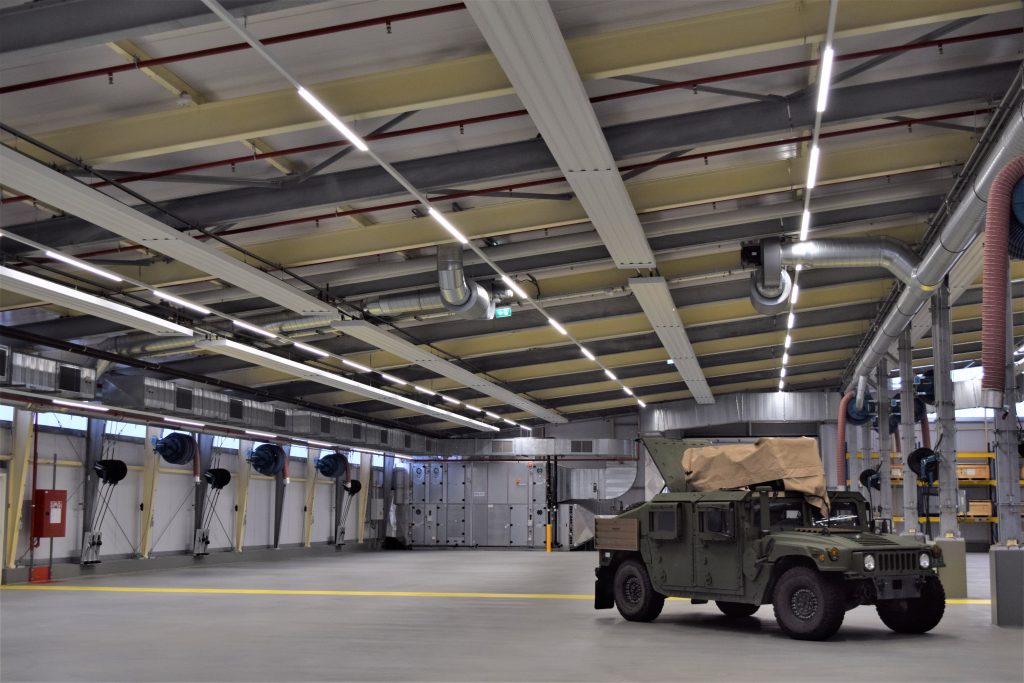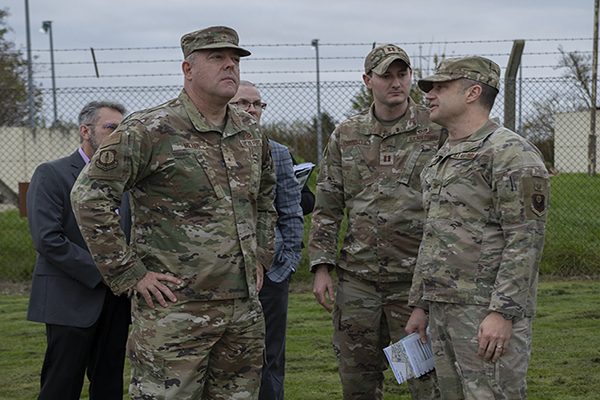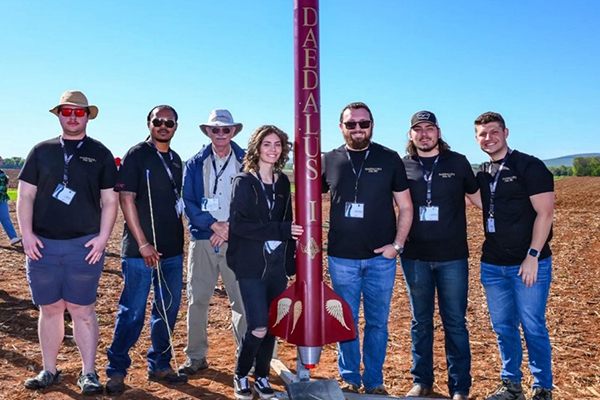Asset Management
By Monik Mehra, M.SAME
As military bases and government facilities advance renewable energy initiatives, DC-powered LED luminaire technologies can provide reliable lighting and controls, both saving energy and helping to promote installation resiliency.

U.S. Army photo by Sandra Wilsons.
As the United States and other nations invest in grid modernization and resiliency, there is a growing focus on electrification, renewable energy integration, and carbon reduction. In addition, in other international locations, there is rising concern over the reliability of unstable electrical grids.
While alternating current (AC) has traditionally been the dominant power form within electrical infrastructure, direct current (DC) is rapidly expanding its presence in the marketplace. From renewable energy sources and electric vehicles to mobile devices and information technology networks, greater adoption of DC power is more prevalent now and continuing to grow.
Adopting DC power could be significant in efforts to easily connect buildings on military bases to renewable resources and energy storage batteries. In fact, a first-of-its-kind DC microgrid currently is being developed at Kirtland AFB, N.M., an installation located in the north-central part of the state in southeast Albuquerque and situated broadly within a high desert environment. The base, which is home to several operational tenants and key military systems, is the sixth largest in the U.S. Air Force and employs more than 23,000 people.
A microgrid such as what is being implemented at Kirtland would incorporate DC loads, enhancing energy resilience and improving system efficiencies by reducing the reliance on current inverters, which are a common failure point for traditional microgrids. A proof-of-concept DC microgrid at Kirtland involving housing and community building loads recently was successfully demonstrated, paving the way for the $4.8 million project now underway. The integration of DC-powered lighting is planned as a key element in the pilot program at Kirtland.
Wide-Ranging Benefits
Converting from DC to AC is inherently inefficient. Estimates indicate a 5 percent to 10 percent efficiency lost at every conversion point, depending on the load type. Conversely, while converting AC power to DC also results in efficiency losses and potential failure points for connected devices and systems, DC connections straight to renewable energy sources, combined with DC-powered building systems, has been proven to generate significant energy savings when compared to AC-powered buildings. The U.S. Green Building Council has introduced a LEED credit for Direct Current Power Systems (in recognition of encouraging its potential) as well as consideration for DC-powered systems under its LEED Zero certification.
New innovations in DC architecture provide a distributed power solution for LED lighting systems, revolutionizing their efficiency and sustainability. By eliminating the need to convert AC power to DC power at the luminaire, the DC architecture reduces energy losses and simultaneously increases the reliability of lighting systems. This not only lowers maintenance and operation costs, but contributes to overall energy savings and sustainability goals.
DC architecture is ideal for occupied spaces where energy efficiency and occupant comfort and well-being are critical factors. It is also ideal for military bases that need more options for resilient energy sources other than diesel-generated power in case the local power supply is disrupted. That can be especially beneficial for overseas locations and contingency bases without reliable, continuous power sources.
More energy efficient. DC architecture can eliminate the need for power conversion at each luminaire’s LED driver, leveraging the distributed DC power from a DCHUB. These DC-powered drivers are optimized by design, compared to AC-powered drivers, as they do not require components such as transformers, electrolytic capacitors, and metal oxide varistors. This reduces their size, generated heat, and potential failures, and results in extended life of the luminaire, increased reliability of the lighting system, and up to 10 percent greater luminaire efficiency.
According to a study conducted for the Department of Energy, and a subsequent 2020 report from the Pacific Northwest National Laboratory, when LED drivers failed it was determined that 100 percent of the failures were from the conversion. All the failures can be traced to circuits involved in providing power factor correction, electromagnetic interference suppression, and intermediate DC voltages within the samples. None of the failures were traced back to the circuits directly driving the LEDs.
Safer wiring. Due to its power, current, and voltage limitations, a Class 2 circuit considers safety from a fire initiation standpoint and provides acceptable protection against electric shock.
Flexible lighting control design. LED luminaires can be individually controlled or grouped in zones. The time to install can be further reduced by leveraging embedded occupancy and daylight sensors within luminaires. Spaces can be reconfigured and lighting control zones customized without the need (and cost) of rewiring.
Reduced materials, installation hours, and maintenance. Utilization of Class 2 low voltage DC wiring eliminates the need for power packs, junction boxes, and conduit to luminaires, providing reductions of both materials and related installation hours. This also contributes to a reduction in construction carbon footprint. With DC architecture, a DCHUB works as a single point of AC to DC power conversion and luminaire control interface, reducing points of maintenance. The DCHUB is more accessible for maintenance, resulting in a decreased need for taking down or opening the housing of luminaires.
Direct power connections to renewable energy. The combination of DC-powered building systems and the direct connection to renewables have been shown in a simulation to generate an estimated 10 percent to 18 percent in energy savings as compared to buildings with AC power distribution networks.
Integrates for a unified building approach. DC architecture can be used within a hybrid implementation of both DC-powered and AC-powered lighting systems within a single building. It is part of a unified platform through networked controls, enabling building-wide control and lighting strategies.
The Time is Right
Success in the execution of DC-powered LED luminaire technologies for domestic projects of private industries in the United States shows promise that these technologies can also benefit projects across the Department of Defense and Department of State. Military bases and diplomatic campuses can harness the advantages of efficient, reliable illumination provided by LED lighting and control systems while benefiting from DC power generated by greener and renewable power sources.
Enabling new LED and DC technologies will promote the longer life of installed lighting and control sources, reduce installation and maintenance costs, provide a safer and more secure environment, and tie into government initiatives of energy efficiency, electrification, and renewable energy generation.
Resilient, Reliable
Research conducted on direct power lighting and microgrids, including by the Pacific Northwest National Laboratory, offers recommendations for implementing these technologies.
Convert utility AC power when available to DC.
Generate DC power for resiliency using solar, wind or other renewable energy sources.
Store DC power using energy storage batteries.
Consume power as DC to stretch resilient power source in times of necessity.
- Interior lighting using safe, cost-effective Class 2 power.
- Exterior lighting using higher voltage Class 1 power for long distances.
- Computer, HVAC and other building loads supplied by reliable and efficient DC power.
- Electric Vehicles charged directly using DC and also can be used as energy storage through vehicle-to-building or vehicle-to- grid (V2B or V2G) technology.
Monik Mehra, M.SAME, is Director, Global Specifications and Sales, Acuity Brands Lighting and Controls; monik.mehra@acuitybrands.com.
Article published in The Military Engineer, September-October 2024
More News from TME
-

Leading the Way: Partnering for Resiliency and Readiness
TME Interview with Brig. Gen. Patrick Miller, P.E., F.SAME, USAF Commander, Air Force Civil Engineer Center -

Developing Tomorrow’s STEM Workforce Through Partnership
TME recently interviewed leaders of the Panama City Post about paying it forward, their repertoire of STEM outreach, and the benefits of collaborating with similar-minded professional organizations. -

Electrifying Solutions for Military Installations
As military installations implement electrification measures into the future, the challenges they face will not just require innovative technology solutions but embracing a holistic delivery approach implemented early in projects.